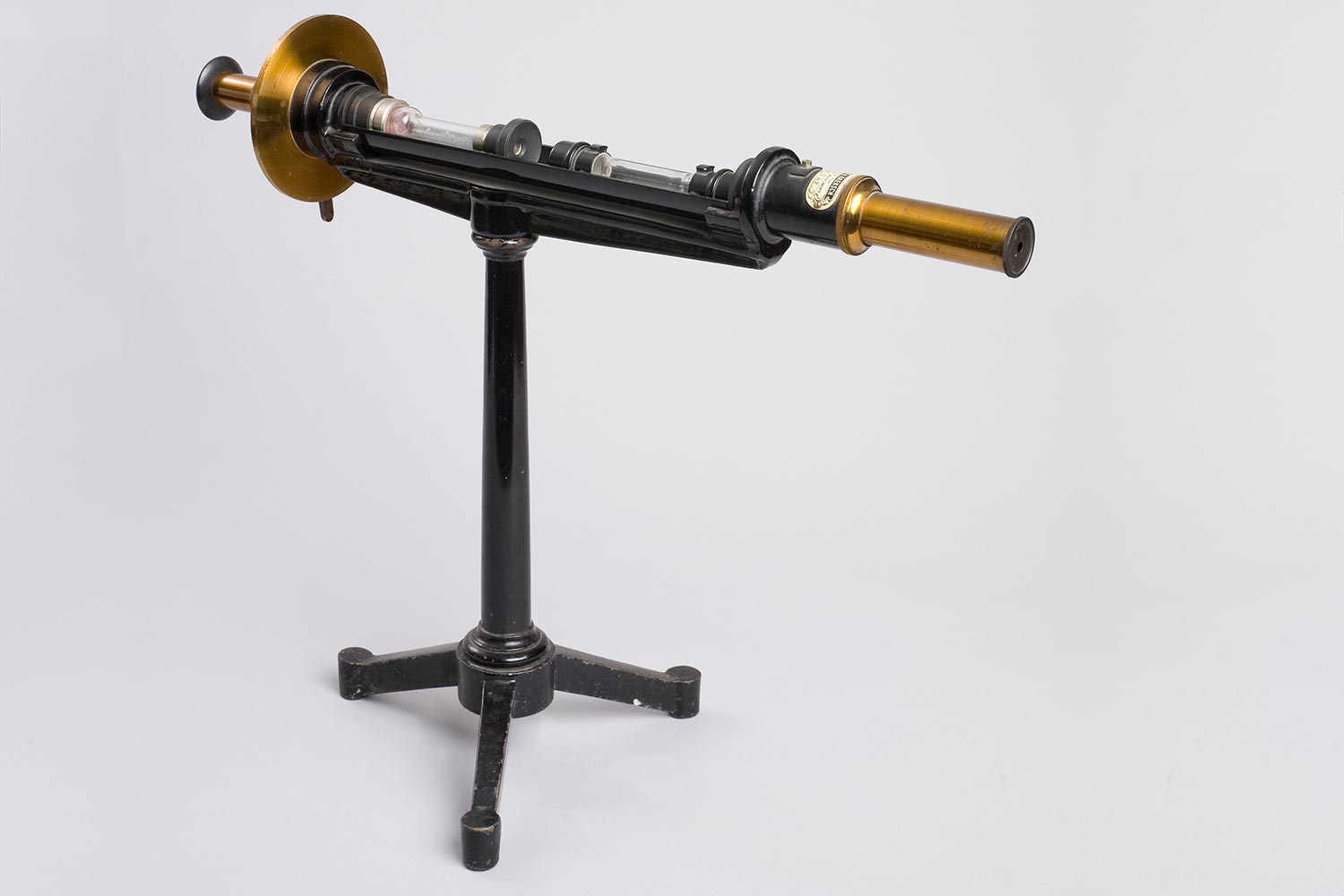4Polarimeter
around 1890

A polarimeter is an optical measuring instrument. It is based on the fact that light consists of waves that oscillate in a certain direction, for example up and down or left and right. The direction is called the plane of polarization. Many biochemical substances are optically active. This means they affect the polarity of light rays that are shined on or through them, or rotate the waves one way or the other. Polarimeters can be used to measure whether substances are optically active and what type of activity they have, i.e. whether they rotate to the left (L) or to the right (D). In addition, the instrument can also be used to determine concentrations of substances.
The polarimeter consists of a light source (not on display here), a polarizer and an analyzer. The latter are optical filters that only allow waves of certain levels of polarization to pass through. Seen from the perspective of the light source, after passing through the polarizer, all light waves oscillate in the same direction. Another way to put this is that the polarizer produces light that is linearly polarized. On its way to the analyzer, this light passes through the polarizing tube in the middle. This contains a substance to be analyzed. The analyzer has a disc that can be rotated along a standardized circular scale, which permits reading the degree of polarization.
This display exhibits two polarimeters made in Berlin:
- Polarimeter from Schmidt & Haensch, workshops for scientific instruments, Berlin, built around 1890.
- Polarimeter from Steindorff & Co., Optical-Mechanical Factory, Berlin, built around 1920.
Instruments like these permitted scientists for the first time to quickly and easily determine concentrations of optically active substances, such as glucose, that are crucial for cell physiology.
The disadvantage of manual polarimeters is that they are not easy to use and experience is required to obtain accurate readings. Today’s scientists, therefore, use automatic, electronically controlled polarimeters.
You can find out more about the companies Schmidt & Haensch and Steindorff & Co., as well as about polarization microscopy, on the website of the virtual microscope museum, in the videos bearing their name.